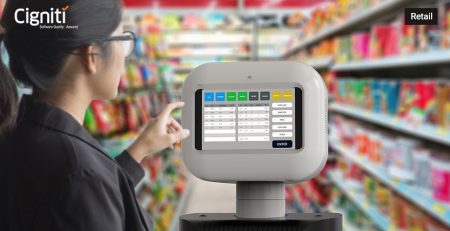How critical is Omni Channel Experience Testing for New-Age enterprises?
|
Listen on the go!
|
Can today’s brands, corporates, and entrepreneurs communicate with their target audience the way they used to almost twenty years back? If you look back, the most prominent way of building brands and reaching out to your customers was via mobile phones, outdoor and multi-media marketing. Today, the overall customer scenario has ‘digitally’ transformed and practically there is no limitation to the ways in which the target customers can be reached. These opportunities are throwing multiple challenges for brands and enterprises, and one of the prominent ones is to ensure Omni Channel experience for customers.
Customers tend to experience the product and like or dislike the product/service by viewing it across various devices and digital platforms. Now, the challenge is to ensure that this experience is uniform irrespective of the dimension or configuration or the network under which the device is operating. Ensuring Omni Channel experience is not only critical, but indispensable for the business.
Omni Channel Experience Testing is very much critical for enterprises to ensure uniform and flawless experience across multiple channels. It is equally important to understand the difference between Omni Channel Testing and Multi Channel Testing. Omni channel testing is executed when the same application is tested across platforms/devices for seamless user experience. Multi-channel testing is done when users have to perform common tasks on desktop, mobile, and tablet devices to determine any issues. So, a single user will only test various functionalities of the application on a single device.
Why is Omni Channel Experience critical for digital enterprises?
Practically, Omni Channel experience is important for extending Omni Channel communication to the end users or customers. Organizations strategize ways to develop brand plans that could manage Omni Channel experience. This is highly business critical, as studies have shown that a substantial percentage of customers or users loose interest in your application if it is unable to deliver the expected experience across multiple platforms. With digital transformation, the experience could be received in various ways – via emails, in-store experiences, desktop applications, mobile applications, and so on.
Providing a consistent user experience becomes absolutely business critical for digital enterprises. This has resulting in added emphasis on Omni Channel Experience Testing. Testing Tools and Testing platforms are being leveraged to ensure that the application under development delivers consistent experience to the customers. Additionally, there is a lot of focus on speed and faster turnaround when it comes to application development and testing. Speed can be achieved only when testing frameworks and automation is put in place.
Keys reasons for considering Omni Channel Experience Testing
This could be a self-explanatory statement and an obvious strategy that enterprises adopt to deal with customer engagement issues in the digital diaspora. Customers today are exploited by choices that are never ending in the actual sense of the word. Devices with various versions of operating systems are making it all the more difficult for businesses across the globe.
Many such compelling reasons are making Omni Channel Testing indispensable for enterprises. Let’s look at ways in which testing and development teams are making it possible for businesses to ensure a flawless experience for their end customers.
Making applications Compatible
Devices with multiple dimensions and configurations is one of the core reasons for working towards delivering consistent experience. Hence, Compatibility Testing is implemented to ensure consistent experience in the overall Omni channel testing strategy. These tests are structured to focus on mobile device and mobile OS fragmentation. Compatibility Testing being a type of non-functional software testing helps to evaluate the application’s performance across Operating Systems, browsers, mobile devices, and network conditions. This will ultimately help to bring down the chances of system failure.
Ensuring accessibility and usability of the application
This is another kind of non-functional assessment of your application across the digital spectrum. For consistent experience it is important to test the application for its accessibility across diverse systems and dimensions. This is at the core of every application development process that helps to enhance the overall experience for the users and evaluates whether the application is able to deliver the expected experience.
Validating Performance of the application
An application is well received by the users only when it is always available, dependable, and its performance is validated across various devices. Performance Testing is a quintessential aspect in the process of Omni Channel experience testing. It focuses mainly on the performance aspects that confirm the application’s consistency irrespective of the environmental pressures on it.
Makes the application secure against threats
According to a recent Gartner article titled ‘Top Six Security and Risk Management Trends’, “Customer data is the lifeblood of ever-expanding digital business services. Incidents such as the recent Cambridge Analytica scandal or the Equifax breach illustrate the extreme business risks inherent to handling this data. Moreover, the regulatory and legal environment is getting ever more complex, with Europe’s GDPR the latest example. At the same time, the potential penalties for failing to protect data properly have increased exponentially.”
Global enterprises are facing tremendous cybersecurity threats resulting in major focus on Security Testing. In an Omni Channel scenario, this secure interface has to be ensured across all platforms. Here solutions focusing on security aspects such as Confidentiality, Integrity, Authenticity, and Availability are needed.
Over the last decade, how internet is being leveraged and used has undergone a major shift with the advent of Smart Phones and Tablet Computers. This shift has caused a “Big Transformation” in the eCommerce industry as it has dramatically changed consumer behavior and moved them away from transacting traditionally. Consumers expect eCommerce platforms to be Smarter, Faster, and Secure. They also expect the transaction experience to be convenient, cost-effective, and safe. Multi-channel commerce consisting of mCommerce and Social-Commerce is also grabbing equal attention of the consumers fueled by enterprises’ “Mobile First” strategy.
To address the above challenges and deliver a value-added service, Cigniti has developed an eCommerce Center of Excellence. The eCommerce CoE leverages proven methodologies, techniques, processes, guidelines, and a tool and technology agnostic framework to ensure effective and efficient testing and validation of eCommerce platforms along with its interfaces.




Leave a Reply